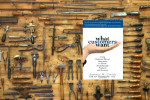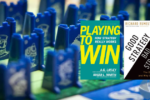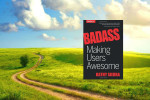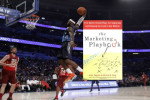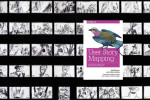Listen Better

When conducting customer interviews, don’t ask your customers what they would do or attempt to predict future behaviors. Watch them perform a task in a real-world context or show you how they did something previously.
Build Better Products: A Modern Approach to Building Successful User-Centered Products by Laura Klein
If you’re looking for a single book that covers product management end-to-end with practical exercises you can do today and skills you can apply today, this is it. Each chapter contains team exercises that help you practice the skills and principles from the book.
The book is broken up several parts: goals, empathy, creation, validation, measurement, and iteration. The individual chapters include: defining a better business need, understand your user better, prioritize better, validate assumptions better, and measure better.
In Part II: Empathy of Build Better Products Laura Klein discusses how to listen better to to customers during interviews and research. Customer interviews are one of those things in product management that seems easy and straightforward, but nothing is simple, not even asking questions potential and actual customers. Success in listening to customers is empathy and it’s not easy, either.
Klein describes empathy as “walking a mile in someone else’s shoes” in order to “understand the the other person’s behavior from within their context.” Empathy is not about feeling sorry for someone or understanding what the person is feeling. She says it’s “about really understanding why somebody feels the way they feel.”
The first step to better listening is to begin with a goal. Many product managers are excited to go out and talk to customers but if you don’t set a goal and have clarity on what you hope to accomplish, you can end up wasting a lot of time. Worse, you can end up with a lot of data that doesn’t help you build a better product. Klein advises to focus by identifying the questions you want to answer and determining the right way to answer those questions.
Questions to never ask in customer interviews
It is your job to understand your users’ collective problems and pick a shared one to solve and then design something that solves it.
Klein warns against asking the following questions because “you’ll get terrible, terrible answers.”
“Will you buy/use this product?” – this is a bad question because you’re trying to predict the future and it elicits favorable responses from people. Klein says people are usually optimistic about the future and can easily conceive of scenarios where they’d buy or use a product.
“How much would you pay for it?” – there’s a lot of great writing about the right way to determine prices, and asking open-ended questions isn’t it.
“What features does it need to have?” – here, the answer won’t help you because it won’t help you understand what problem someone is trying to solve, what job they are trying to do, or what their context is. You’ll leave thinking you’re building the right thing, but will likely fail because you don’t really know why you are building what you are building.
Klein gives the example of asking users of early cell phones about their cameras. Most likely people would have said they hated the camera and that it was superfluous due to the poor performance and capabilities of the early built-in cameras. However, few consumers could have foreseen the possibilities of image sharing and manipulation that are available given today’s connected devices, nearly unlimited storage, and instantaneous image manipulation capabilities. Klein says the lesson learned here is that the answer “I will never use the camera on my phone” is misleading because it is not as specific as “I don’t carry a camera with me, therefore I miss important moments of my life” and “the camera on my phone is difficult to use because it it cannot focus and images are difficult to transfer and print.”
Asking the right questions during customer discovery
The problem a user is having should always be observed in the context in which it exists.
Klein suggests starting a customer interview by asking background questions such as “what is your job?”, “walk me through your day yesterday” or “tell me about your morning routine”. This can give you information that indicates whether your product fits into their life and how.
Next, Klein says to ask “problem-finding and contextual questions” which are factual and lead to problems that need to be solved. Questions of this type would be: “how do you create that report?”, “what device do you use to watch movies?”, or “show me how you find new music.”
Another type of useful question to ask is what Klein calls “past intent to solve/buy questions”. Klein writes that “an intent to solve or buy is any behavior the person has exhibited in the past that shows they are aware of a specific problem and will take active steps to fix it.” One question to ask in this vein is “how have you tried to solve that in the past?” or “how did you decide on your current mobile phone?”
Klein highlight storytelling as an important part of customer interviews. Getting someone to tell you a story from start to finish will provide a lot of context and initiate follow-up questions.
Customer interview guidelines for product managers
Klein offers a number of interview do’s and don’ts including:
Stop pitching and start listening / don’t sell your idea – a customer interview isn’t the time to sell your idea; it’s a time to learn, gather information, and exercise your empathy skills
Don’t ask yes or no questions – although it’s tempting to ask directed questions, your goal is to get context and understand the “nuances and explanations”; leave room for elaboration and storytelling
Don’t lead the participant – you’ll completely defeat the purpose of the interview if you simply lead the participant to a particular conclusion; your product will suffer because you’ll be building towards you own assumptions rather than real user needs; there’s another rule about not talking too much as well
Don’t make the participant imagine – use prototypes, storytelling, and clickable models to watch the participant interact and actually try to use your product; imagining will not lead to usable data because you can’t tell exactly what the participant is imagining
Don’t help the participant – you’ll want to jump in and help get the participant unstuck, but that defeats the purpose; what you really want is to fully understand their struggle and see how they eventually solve the problem
Don’t ignore the results – this the worst thing you can do; after all the effort and time spent by you and participants, make sure you start with the right goals, ask the right questions, and translate the findings into an actionable plan for the team
Klein wraps up by advising some healthy skepticism. “People lie” she says and you need to ask follow-up questions and cast a critical eye on things that don’t sound right. In particular, be aware that people will have a natural tendency to tell you they like your idea. Although you want validation, don’t forget to probe in order to find evidence that will disprove your hypothesis.
The Ladder of Evidence
Teresa Torres has a great presentation on “the ladder of evidence” which mirrors Klein’s advice: don’t ask people what they would do. Ask them what they did in the past and ask for specific stories that explain what they’ve experienced in the past. For the most value, observe the participant in a real-life scenario or ask them to show you what they did.
